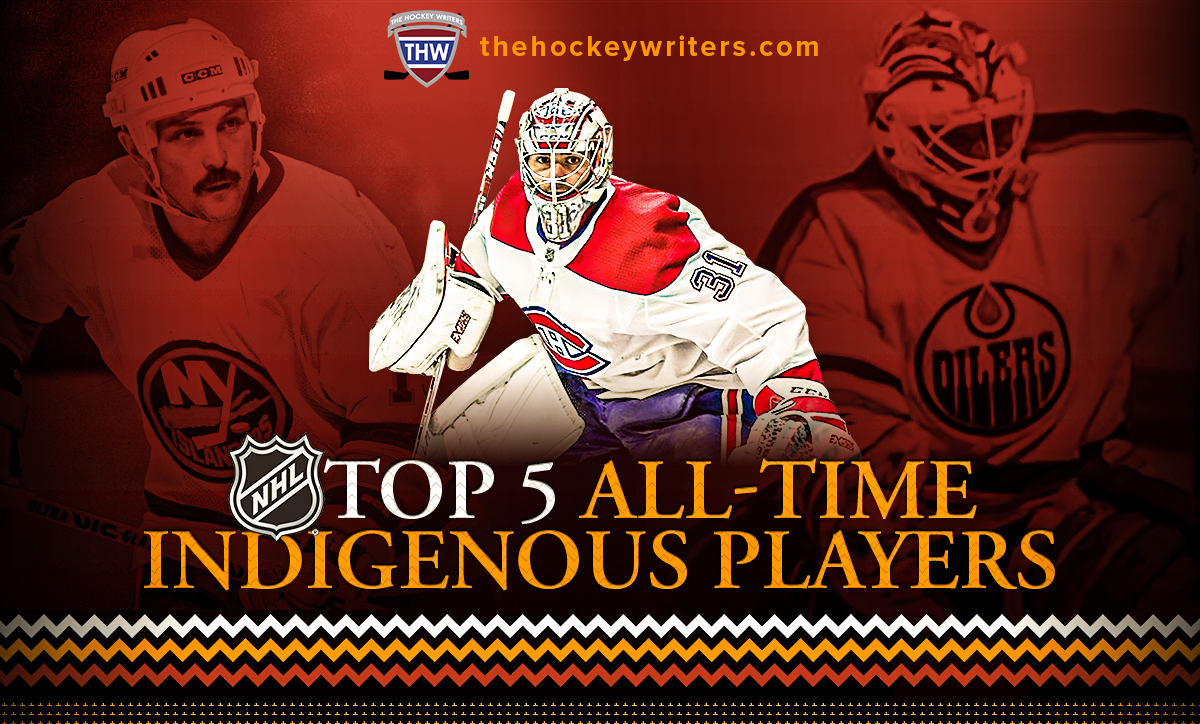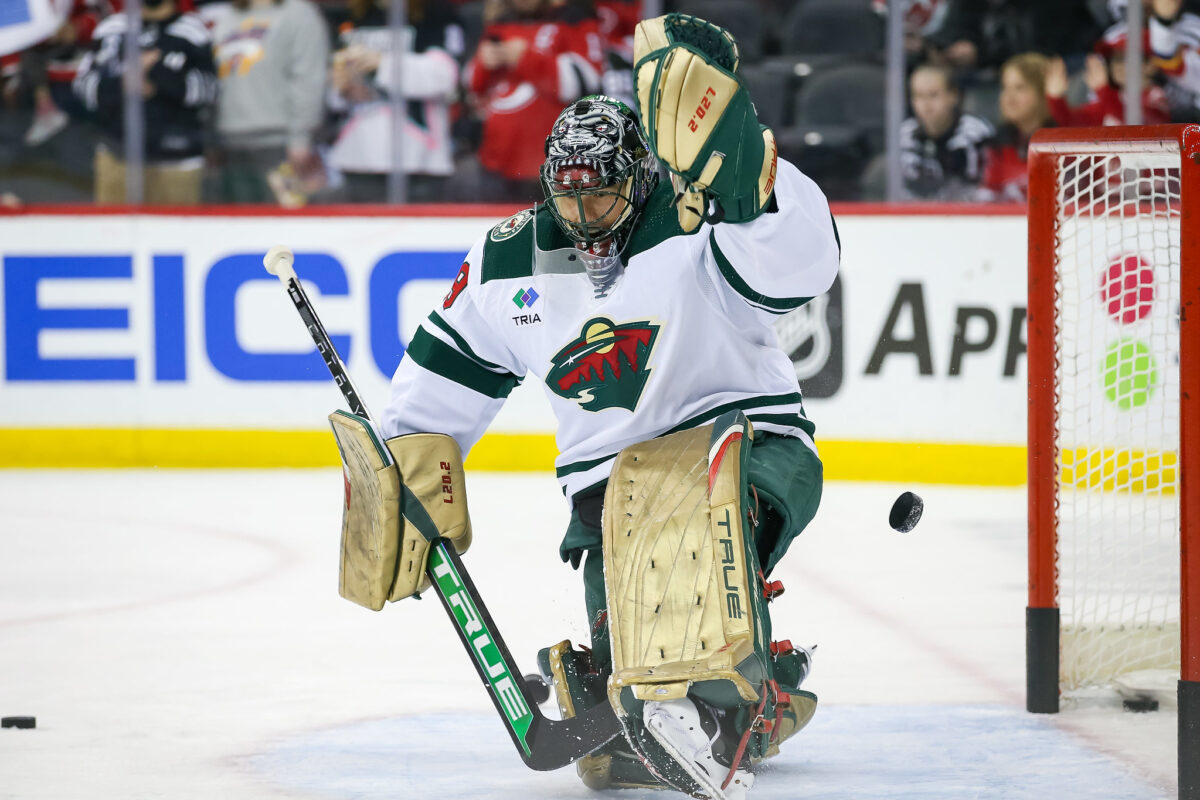This past week, Minnesota Wild goalie Marc-Andre Fleury found himself at odds with the NHL over a custom-designed mask he had made to celebrate the team’s Native American Heritage Night on Nov. 24. When the NHL heard of Fleury’s intentions, it notified him that wearing the mask would result in fines for both him and the Minnesota Wild.
Related: Minnesota Wild Roundtable: Thanksgiving 2023
Despite the warning, Fleury decided it was within his rights to pay tribute to indigenous cultures and to honor his wife, who is a member of the indigenous community in Canada. As a result, out of respect for both the indigenous community and his wife (who is of Abenaki and Mi’kmaq descent), he accepted the NHL’s punishment and wore the mask during the team’s warm-up against the Colorado Avalanche.
Fleury’s Mask and its Symbolism and Design
The goalie mask was designed by artist Cole Redhorse Taylor and featured green, yellow, and red floral designs representing the Dakota culture. It also engaged in cultural aesthetics, a respect for the land, and the indigenous people’s relationship to the Earth. As well, the mask incorporated elements of the Dakota language and a quote in French from Fleury’s late father, who had lost an eye as a child. For Fleury himself, that was meaningful in a respectful but humorous way because, as his father always told him, it was important to keep an eye on the puck.
The symbolic and personal nature of the mask made it a powerful and loving statement of cultural pride and family connection.
The NHL’s Controversial Ban on Specialty Symbols
The NHL’s decision to prohibit players from wearing specialty-themed jerseys, masks, and tape during promotional nights, such as Native American Heritage Night and Pride Night, is both controversial and tone-deaf. The ban, which was initiated before the 2023-24 season, was a response to a few players’ complaints about wearing rainbow-themed jerseys on Pride nights during the previous season.
However, the NHL reversed the ban on Pride tape after there was significant support for Arizona Coyotes’ Travis Dermott who defied the ruling and used the tape anyway. At this point., you might think the league would learn a lesson and apply it when it came to similar instances. It did not.
Fleury’s Offer to Pay the Fines Grounded His Position
Fleury recognized the significance of the mask and the occasion. At the same time, he offered a compromise to limit the mask’s use to warm-ups. He also shared that he would willingly cover any fines imposed. It was, after all, his decision and he was willing to pay the price for making it.
Related: “Welcome to the NHL, Kid.” Fleury Dumps Bedard During Shootout
However, the NHL then doubled down. It threatened the Wild franchise with an “additional significant fine” if Fleury proceeded. Only then, in response, did Fleury, with the support of his agent Allan Walsh, openly criticize the NHL’s decision. He called it stupid and proceeded to wear the mask during the game’s warmups against the Avalanche anyway.
What Does the NHL’s Stance Show About Its True Ethos?
The NHL’s decision to impose bans on symbols of cultural celebration and diversity has raised (and should raise) concerns about the league’s commitment to inclusivity. For a league that advertises itself by using its own symbolic slogan “hockey is for everyone,” the restrictions on actions meant to welcome and honor individuals from minority communities are contradictory.
There seems to be a fear that these symbols might be deemed “controversial” or negatively impact viewership. But, from whom? The NHL’s misguided decisions have completely missed the boat on fostering diversity within the sport. It also suggests that there’s no backbone to do the right thing as opposed to the “thing that’s easiest” or that lines the pockets of the NHL. [I’ll explain the “lines the pockets” phrase later.]

The NHL’s cultural blind spots are evident in its failure to understand the cultural symbolism behind these actions of its own players. These symbols play a crucial role in both celebrating cultural heritage and fostering inclusivity, and the league’s policies contradict the positive impact of inclusive gestures on its diverse fanbase.
Related: A Chicago Blackhawks’ Tribute to Marc-Andre Fleury
This disconnect between the NHL’s “hockey is for everyone” slogan and its restrictive actions rightfully raises questions about its alignment of stated values with tangible actions for meaningful change.
The NHL’s Authorized Use of Symbols Is Extremely Ironic
Symbols are hugely important. They play a significant role in promoting inclusivity and representation in sports. On a larger stage, they also advance the key human concept of belonging. They openly invite people to live “together” as humans sharing the Earth.
Pride tape, for example, contributes to increasing LGBTQIA+ visibility and acceptance. Similarly, cultural symbols on Native American Heritage Night foster community pride and acceptance. They actively, which is so important in Canada, promote reconciliation.
https://x.com/RussoHockey/status/1728097545799319931?s=20There is also an obvious and notable irony in the NHL’s perspective when both considering team names and the recent inclusion of advertising on team uniforms. On one hand, every team in the league has a symbol or mascot associated with its name. The Chicago Blackhawks immediately come to mind. These symbols inherently emphasize the cultural and symbolic significance these representations hold. The symbols are often deeply ingrained in the identity and tradition of the teams, contributing to a sense of community and shared history.
However, the irony arises when the NHL takes a restrictive stance on players expressing their cultural symbols, as seen in cases like the ban Fleury just experienced on a night meant to promote the exact thing he promoted. At the same time that teams are allowed to celebrate symbols, players are limited in showcasing personal or culturally significant symbols. That fact is illogical and highlights a disconnect between the treatment of team and player expressions.
Related: Marc-Andre Fleury: The Most Undervalued Goalie in the NHL
Moreover, the recent introduction of advertising on team uniforms adds a deeper layer of irony. The inclusion of symbols related to advertising, including those associated with potentially addictive behaviors like gambling, raises ethical concerns. That the NHL can argue that this is a financial decision makes it even worse. The league’s or a team’s choice of certain sponsors sends conflicting messages about the values the league prioritizes.
It’s even worse when these choices are based on money coming into the coffers. It’s contradictory for the NHL to permit symbols promoting potentially harmful activities (and do it for money) while restricting players from expressing symbols that celebrate cultural heritage or advocate for inclusivity (which they do to support more positive values).
It’s Time for the NHL to Prioritize More Inclusive Decisions
In essence, the NHL’s approach to symbols is inconsistent and illogical. More to the point, it’s wrong. When the NHL emphasizes commercial interests over cultural sensitivity and individual expressions, it gives clear messages about what values matter the most.

It’s time for the NHL to carefully go back to the drawing board to consider the messages conveyed by both team symbols and advertising partners. The NHL isn’t walking the talk. It’s quite the other way around.
The NHL is not acting out its stated values of ensuring respect for the values of inclusivity, responsibility, and respect for diverse communities. It’s time for a change.
